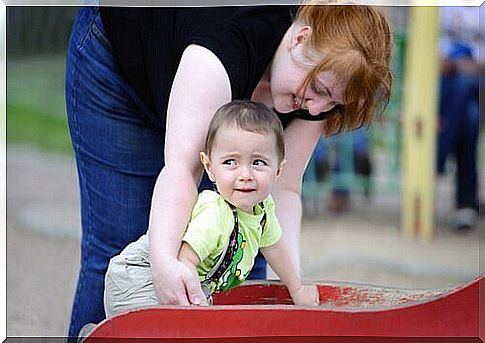The Strange Situation Procedure, Affiliation

Normally, attachment can be described as a lasting relationship to a particular and binding component. Mary Ainsworth is a pioneer in the development of the first tool for assessing attachment in children. Her approach is known as the strange situational procedure.
This mother-child bond does not manifest itself exclusively in humans. It also manifests itself in many animals. However, humans need more time to form this bond. Affiliation is consolidated when the conditions exist between two people.
The goal of affiliation
It is important that a child’s first attachment is healthy. The purpose of the connection is therefore to achieve safety, comfort, protection and satisfaction of the child’s basic needs. Depending on the type of attachment they develop with their caregivers, children may show more or less closeness, emotional refuge, protest against separation, and a basis for safety.
This bond not only affects the child’s immediate well-being, but also marks their psycho-evolutionary development. Therefore, deficiencies in attachment can affect them in good adulthood.

Necessary conditions for connection to take place
In order for the earliest connection to take place, a number of minimum conditions must be met. These requirements guarantee that the connection develops in the right way:
- Have an adequate repertoire of attachment behaviors. Milestones, such as smiling or babbling, and following and approaching the mother.
- This behavior causes the child to be drawn towards the adult, which establishes and produces privileged interaction between the two.
- Have minimal affective abilities.
- Keep a variety of cognitive resources as a minimum to recognize an adult, gather memories and give expectations about their attachment figure.
The strange situation procedure
The Strange Situation Procedure is a laboratory process designed by the American psychologist Mary Ainsworth in 1960. The goal is to study the interaction that a mother or an adult (stranger) maintains with the child in an unfamiliar environment. The procedure has been so popular in developmental psychology that it is still used today to classify and evaluate different styles of attachment.
Simulations
The strange situational procedure attempts to simulate certain contexts in order to analyze how children behave outside their comfort zone. In other words, how children leave the safe environment of the home and explore another unknown location. Through observation, the researchers study the children’s reactions when they are separated from their mothers and when they are reunited.
This simulation consists of eight episodes intended for children aged one year. The relationship between baby and caregiver should be clearly established around this time.

Approach
In one of the most common variants of this procedure, Ainsworth placed the child next to his mother in a room full of toys. After a while, a stranger entered the room and the mother left the child with the stranger. Then the mother came in again. Later, both she and the stranger left the room, leaving the child alone. Then the stranger came in again.
With this, the psychologist assessed the reactions and interactions that took place between the attachment figure, the child and the stranger.
Affiliation styles
The strange situational procedure has established three styles of attachment: secure, evasive, and ambivalent.
- A secure connection is evident when the child freely examines the environment when it is separated from its caregiver. They feel anxious when their mother leaves, but are enthusiastic when she returns.
- Avoidant attachment is also characterized by the anxiety the little one experiences when the mother leaves. But unlike in a secure attachment, they tend to avoid the mother when she returns.
- Insecure / ambivalent attachment shows signs of anxiety throughout the process. The child shows anger towards the caregiver, especially when they are absent.
A child’s attachments do not completely determine their personality or the quality of their relationship with adults. However, it can affect these factors and the interaction that is established at later stages of development.









